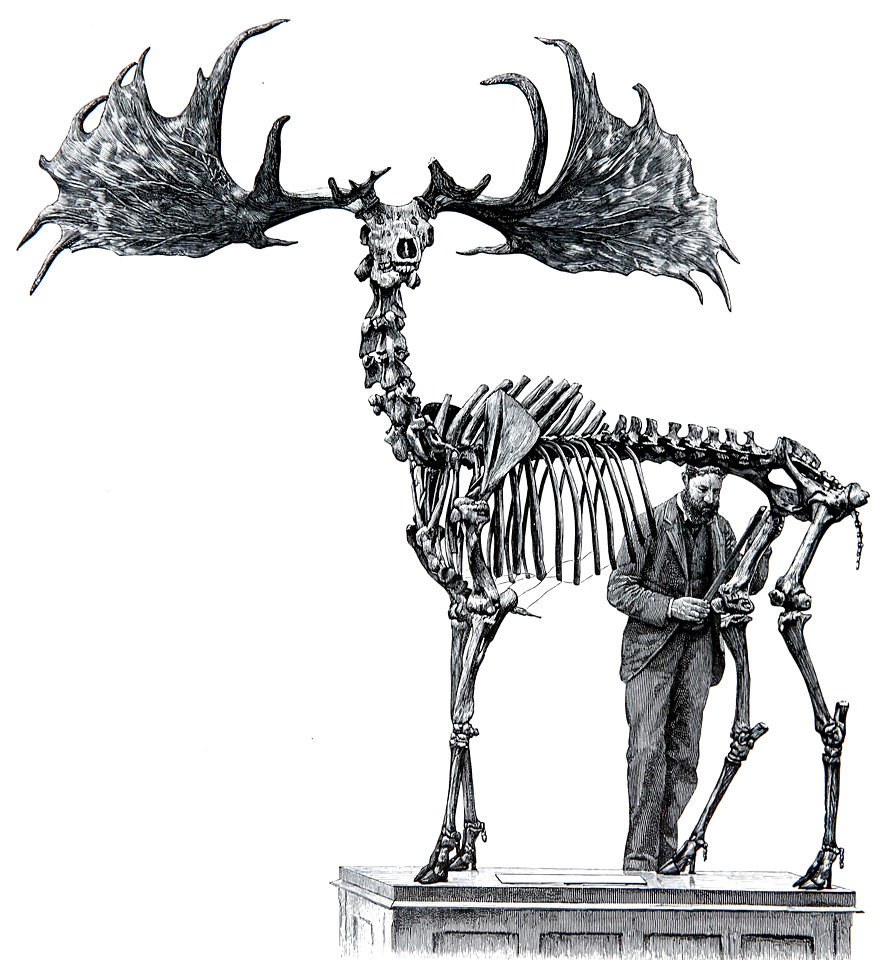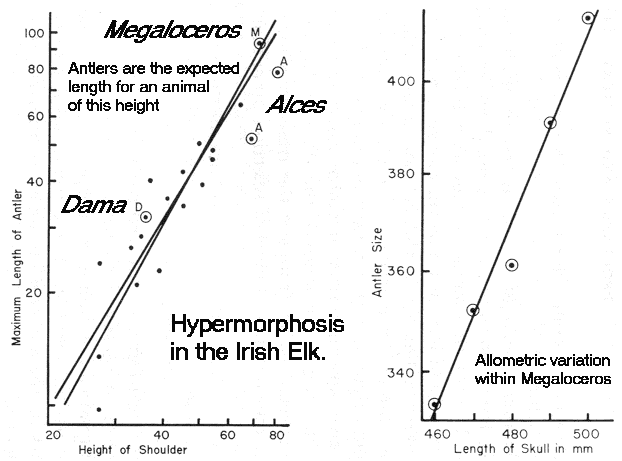

Orthogenesis vs Hypermorphosis in
Irish Elk (Megaloceros)
The 13'
antler rack in the Irish Elk (Megaloceros) [right] was formerly argued to be an
example of Orthogenesis:
continued evolutionary increase in size of a structure past the
point where it is adaptive, due to an innate tendency of
organisms. The extinction of dinosaurs was explained by suggesting
they simply became "too big" to survive.
Paleontologist Stephen J. Gould showed
instead that the size of antlers in deer displays positive
hypermorphosis with respect to body size: antlers develop proportionately
faster than body size. Antler size in Megaloceros is the expected size for a
species of its height (left), and therefore requires no special
evolutionary explanation. The same relationship holds within
species, such that larger Megaloceros have proportionately larger antlers than smaller [right].
This is one example of the general phenomenon of developmental Allometry,
where different body parts grow at different relative rates.
Homework: From the five points
in the right-hand graph, calculate the linear equation (Y = mX
+ B) to relate Antler Size (Y) as a function
of
Length of Skull (X).



